After Andy died on 21st May 2004, we decided that we needed to create some kind of memorial for him. We weren't sure what to do exactly but we were considering planting trees or plants somewhere in the fields or garden. We also considered some kind of monument, but were really unsure about what we were actually capable of doing. We also need somewhere to place his ashes.
Towards the end of 2004, we were doing some garden tidying near the old gravel garden, which had become completely overgrown. After a couple of days hacking through the undergrowth, we reckoned that with a serious effort we could turn it into some kind of memorial garden.
The gravel bed
We thought that we could combine all our ideas into one solution. The final idea was - some kind of gravel garden, with plants and trees; some plants to break up the gravel; and a stone monument with a brass plaque.
After we had cleared away the weeds, and some of the old plants that we didn't want there anymore, we laid some garden anti-weed membrane. Then it came time for barrow after barrow of gravel from the pile by the house.
Later it became clear that we needed more gravel, and the tractor was pressed into action. We have another pile of gravel in the yard. It was surpluss from our Septic Tank Adventure. Tony dumped a few loads of gravel on the garden from the farm yard below, and it was spread over the whole garden by hand.
A few weeks later we started planting bulbs that we bought from St. Anne's School fund raiser. We cut slits and small holes in the membrane and planted the bulbs in the soil below. The rest of the bulbs were planted around the garden - mainly around the kitchen area.
The boulder
Next, it was time for the monument. We wanted some kind of monolith with a plaque on it. It just so happened that we had a spare one (what do you mean you don't have spare monoliths lying around the place?), left over from when we dug the reservoir in 2002. The monolith was in fact just a large boulder that we had removed from the site of the reservoir. However, it needed moving. It weighed an estimated 1.5 Tonnes, and needed some careful handling.
Due to a tremendous amount of foresight on my (Tony's) part, I had placed the boulder onto a couple of old lengths of timber after we removed it from the site of the reservoir, thus enabling me to put some kind of sling underneath the boulder to facilitate lifting it with the tractor's front loader. The boulder had languished in the field above the reservoir for a couple of years, and the first task was to bring it back to the yard for inspection. I put my adjustable chain around the boulder and lashed it to the front loader ready for the first lift attempt. Sure enough, the tractor took the strain and it came off the ground slowly but surely. Then we had to reverse out of the arboretum and turned ready for the descent down the field and on to the yard.
Even with the digger on the back the tractor seemed a tad front heavy. The boulder was as low as I could get it without it dragging on the ground as I was a little concerned about my centre of gravity. As I went over the brow of the hill the tractor lurched sideways and I became serioulsly worried about tipping over. I immediately turned the tractor to face directly down the hill rather than across it and soon I was down, and heading for the yard.
Before setting the boulder down in the yard I remembered to put down a bed of small rocks for it to lie on, so that we could put a new sling around it when the time came to move the boulder onto the gravel garden.
A few weeks later, Liz and Tony decided to have a go at placing the rock in its final resting place. So the tractor was fired up again, and the front loader was manouvred so that the boulder was in the bucket this time, so that Tony could lift it over the wall and onto the garden, rather than having it slung under the bucket, which would not give us enough height.. Unfortunately, even with plenty of revs, the tractor did not have enough lift on the front hydraulics to lift the boulder this time. The reason being that the front loader was in a much lower position than before and the geometry on the rams was not as favourable. So we got out Tony's big jack and Liz operated that as Tony gave the tractor maximum revs. Slowly the bucket inched up and eventually it lifted under tractor power alone. Just as we got to maximum height though, the tractor's cooling system let go, and there was a deluge over the yard. Realising that it was now or never, we carried on and dumped the boulder onto some roofing purlins that we had placed on the garden to facilitate moving the boulder into its final position.
Most of the excitement was now over, and it only remained to use the hi-lift jack and the Land Rover on a long rope to manouvre the boulder until we were satisfied with its position. In the end we gave up on plans to stick it vertically in the ground and to build a stone platform to surround it. We decided that it would take too long, and be too much of a health and safety issue, seeing that we couldn't use any heavy lifting tackle on the site without ruining the garden. Instead we left it lying at a more natural angle in the centre of the garden.
The border
All that remained now was to do something with the border of the gravel garden and the lawn area. It was a bit of a mess as there used to be some kind of building on the site in the old days. Now all that was left was the foundation. We considered some kind of edging, on or inside or outside of the old concrete foundation which came up to level with the lawn. However, we could not see how we could make it look nice. So Tony took the bold step of starting to remove the old foundation. I didn't have any suitable heavy duty concrete breaker so I started makeing small holes with a masonary drill and then braying an iron spike into it to enlarge the hole and try to crack a length of the foundation so that it could be levered out. If I was lucky, I could remove around 1 meter per day. Many times I seriouly whacked either my hands with the sledge hammer, or had the iron spike attempt to remove my knee-caps - it was agony. After a couple of weeks of on-off effort, we decided to spend some money in the shape of a concrete breaker from the hire shop.
This was brilliant. I had it for the weekend, but it was largely done in a day. A second day was spent reducing the larger blocks removed by hand into manageble sized pieces, and carting off all the rubble to the yard.
Then it was time for the laser level and spade to get the trench prepared for laying the stone edging on a bed of concrete. I was going to whack wooden pegs in avery 40cm or so to give me the levels and to rest the stone edging on to make it easier for myself to do the laying. Unfortunately there were too many rocks in the ground (a common problem around here) and Liz suggested concreting the pegs in, and the cutting them to height. It was an extra step that would lead to more delay, but I didn't see what choice we had. So I used the pick axe to make rough holes, stuck the pegs in and set them in concrete.
A few days later ...
My parents came over for a visit, to bring much need supplies of wine. So I pressed my Dad into helping with laying the edging. First job was to set up the laser and use my jigsaw to cut the pegs to a level. This was easy enough with two people, but it took an hour or so. Then we started mixing a dry-mix of concrete in the wheel barrow. Ivan's concrete mixer is in Stafford at the moment and so we had to do it by hand. My shoulder is not up to it anymore really these days, after it got wrecked lifting (and dropping) Andy so often. So I measured it all out and my Dad did most of the mixing. Then I did the laying to give my Dad a rest (of sorts).
I had never done any kerbing before, and I was a bit nervous about getting it level and vertical and strongly bedded etc. but in fact there was no need to worry. We took it slow and steady; reworked when we had to and after a good few hours, we had two out of three sides of the garden done. It looked fine. We used Citadel Edging from B&Q, which is moulded concrete, and looks quite good really, and is much easier to lay than individual tiles. I had to persuade the manager at the local store to get one of his chaps to use their fork-lift truck to get the palette into the Land Rover.
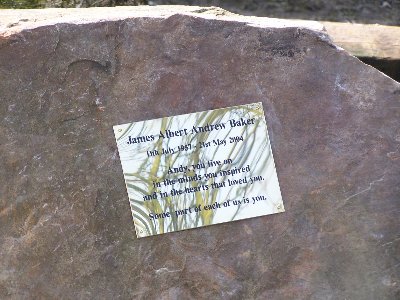
Next day, I mixed another batch of concrete (painfully) and did the final side. After that I used barrows of worm compost to fill the trench on the lawn side of the edging, and more gravel on the inside. Finally, Liz and I nailed some tanalised planks across the back of the garden to support the weed fabric, and the garden was done.
The plaque
We had a plaque engraved in Congleton, and we fixed it to the boulder/monument, and we were all ready for the ceremony in a weeks time.
Andy's Tree





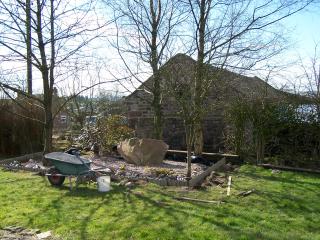
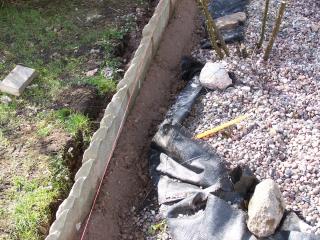



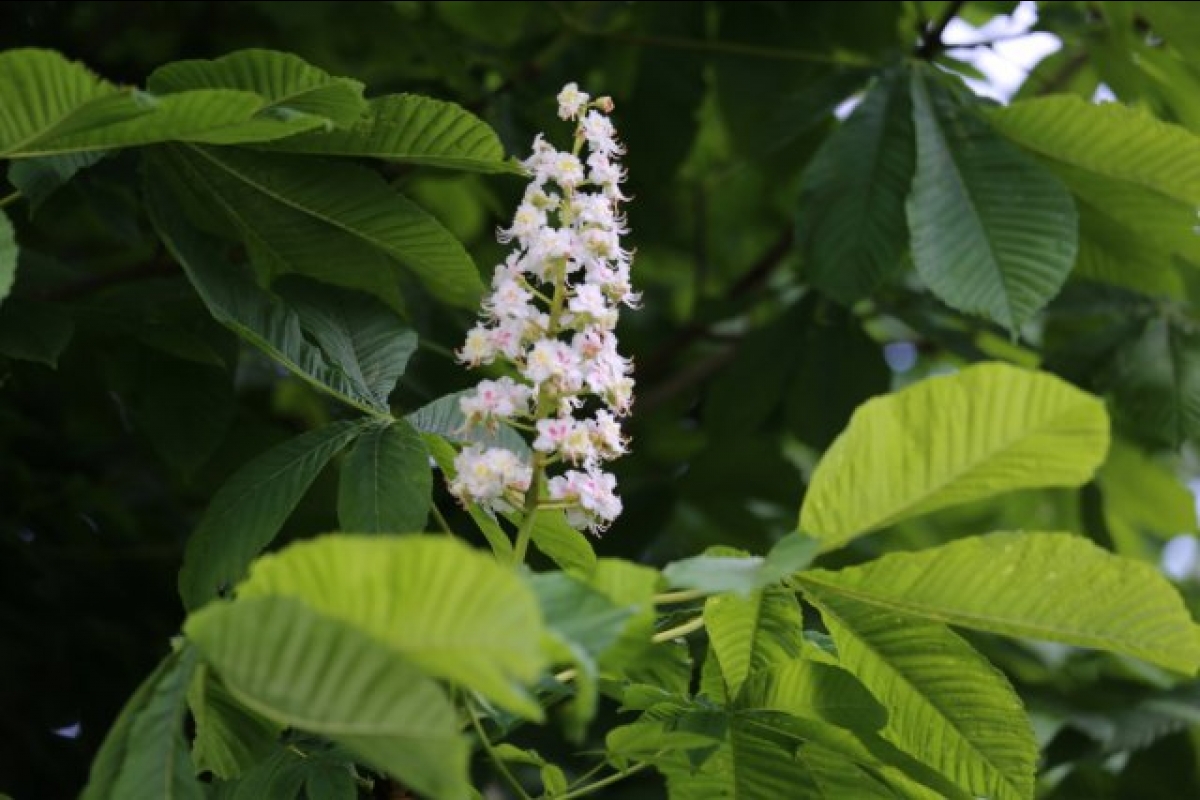
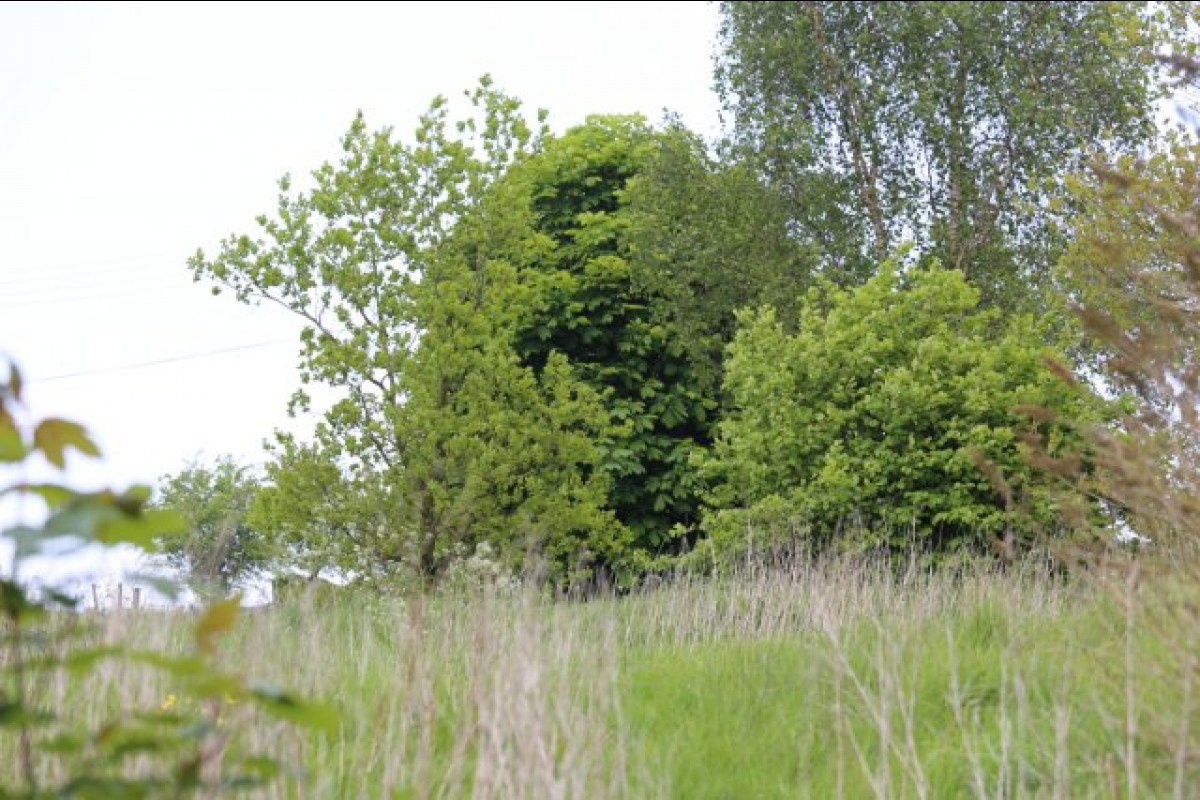



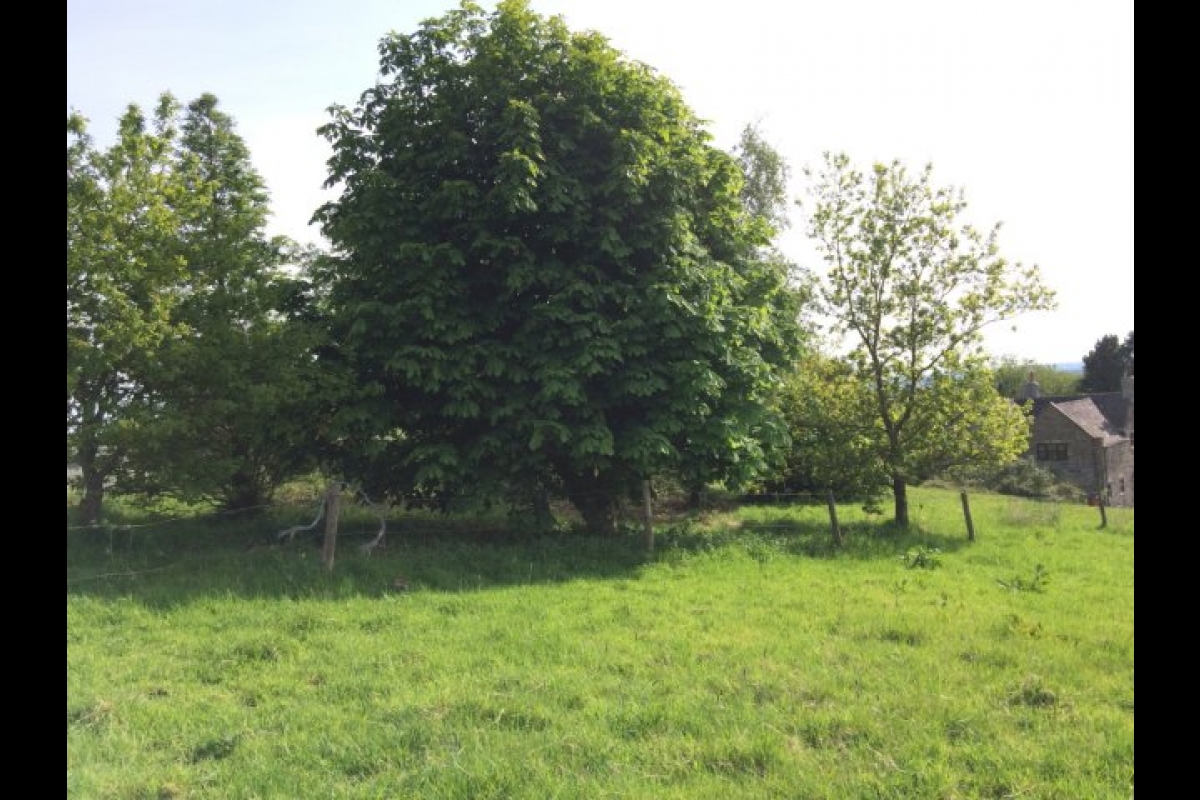


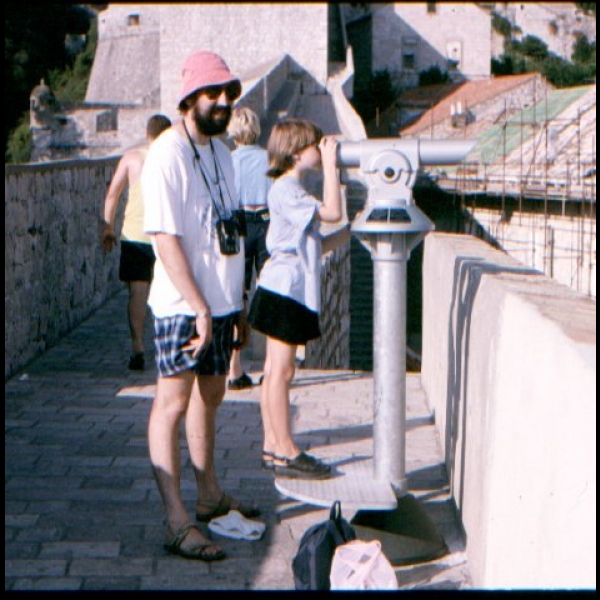

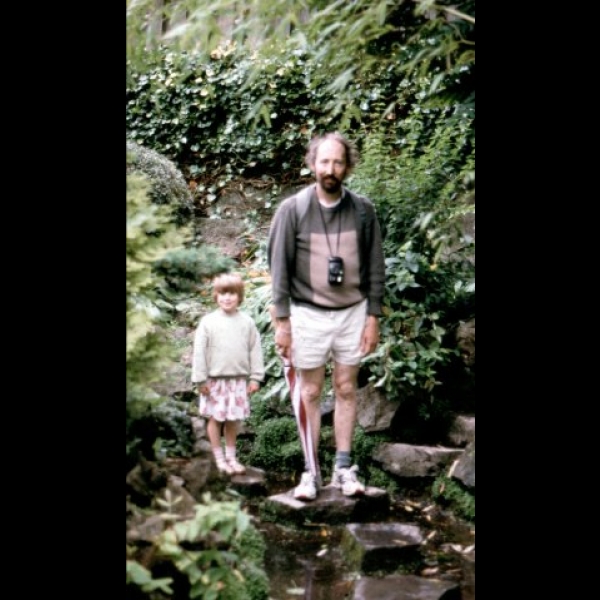


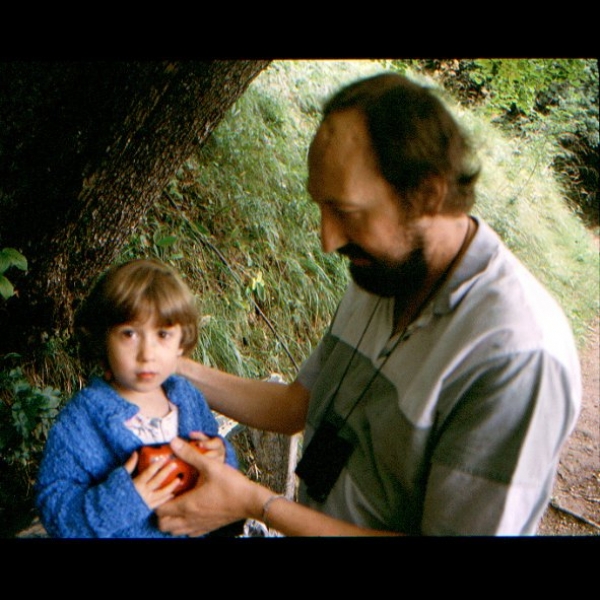


 0
0  1
1  2
2  3
3  4
4  5
5  6
6  7
7 